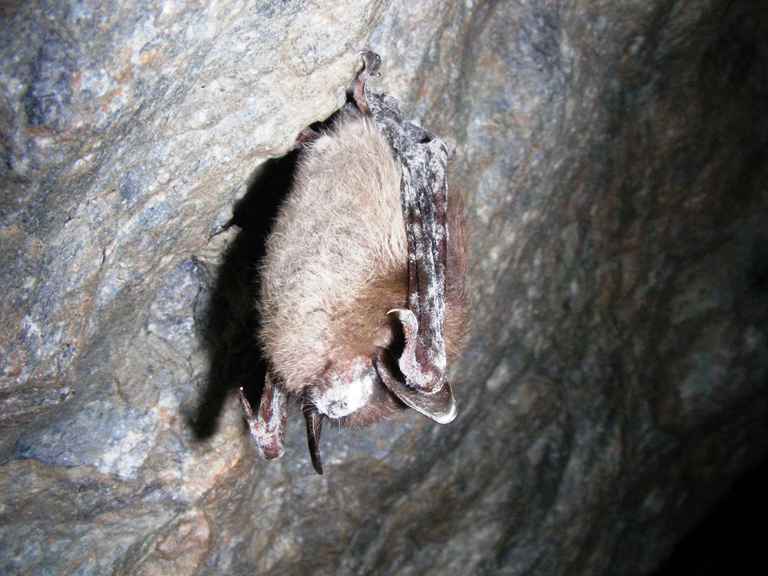A deadly disease that has ravaged bat populations for years across North America has made its way to Saskatchewan.

The province has confirmed its first case of white-nose syndrome — a fungal infection that attacks bats while in hibernation and has created extensive mortality in a number of bat species, including the endangered little brown bat.
On Thursday, the Ministry of Environment shared news of the confirmed case in a post on Facebook, stating that the disease was discovered in a little brown bat found in a campground on the east block of Grasslands National Park, located in the southwest region of Saskatchewan.
“This is the first confirmed case of white-nose syndrome in Saskatchewan, making it more important than ever to report any bats found dead or on the ground,” said the ministry in its social media post.
“It poses a threat to several bat species in the province, including the federally endangered little brown bat and northern long-eared bat.”
Trent Bollinger said he received the bat towards the end of June for further analysis.
Bollinger serves as a wildlife pathologist and regional director for the Canadian Wildlife Health Cooperative, and as a professor in the department of veterinary pathology at the University of Saskatchewan’s Western College of Veterinary Medicine.
He explained how white-nose syndrome was first introduced into North America in 2006 when it was reported in the state of New York. It has since resulted in the decimation of populations of certain species of bats in large caves in eastern North America.

Get breaking National news
“Tens of thousands of bats congregate over winter in large caves. The fungus takes hold in those populations and we see the mortality as high as 95 to 100 per cent among hibernating bats,” Bollinger stated.
White-nose syndrome is caused by a fungus that can be recognized as a white fuzz lookalike on the faces of bats.
The fungus goes after the bats’ skin while in hibernation or in an inactive state and creates erosions and ulcers, damaging body parts such as the nose, tail or wings.
As a result, it causes the mammal to become more active than normal and use up the energy reserves needed to survive the cold months.
Eventually, the animal dies due to a lack of energy.
Bollinger said the province recording its first documented case of the disease is not terribly expected considering it had been detected in bat droppings at the base of bridges and other locations last summer. There were also cases reported in Manitoba and more recently in North Dakota over the past couple years.
However, he noted this first occurrence of the disease is a different situation since it has directly affected bats in the province.
“The fact that we’ve detected this in Saskatchewan just indicates that this is something that is likely to cause a decline in little brown bat numbers in the province,” he discussed. “It’s just another stress on the population contributing to the decline of little brown bat numbers and other bat species in North America.”
People are encouraged to email reports of dead or sickly bats to the Canadian Wildlife Health Cooperative.
Bollinger said it’s unlikely that bats would be suffering from white-nose syndrome during the summer since it’s a disease that is likely to be picked up in the late winter months or early spring.
However, he added there are other diseases that can cause mortality in bats that they’re interested in documenting.
Reports can be submitted to wn@cwhc-rcsf.ca or by calling 306-966-5815.








Comments